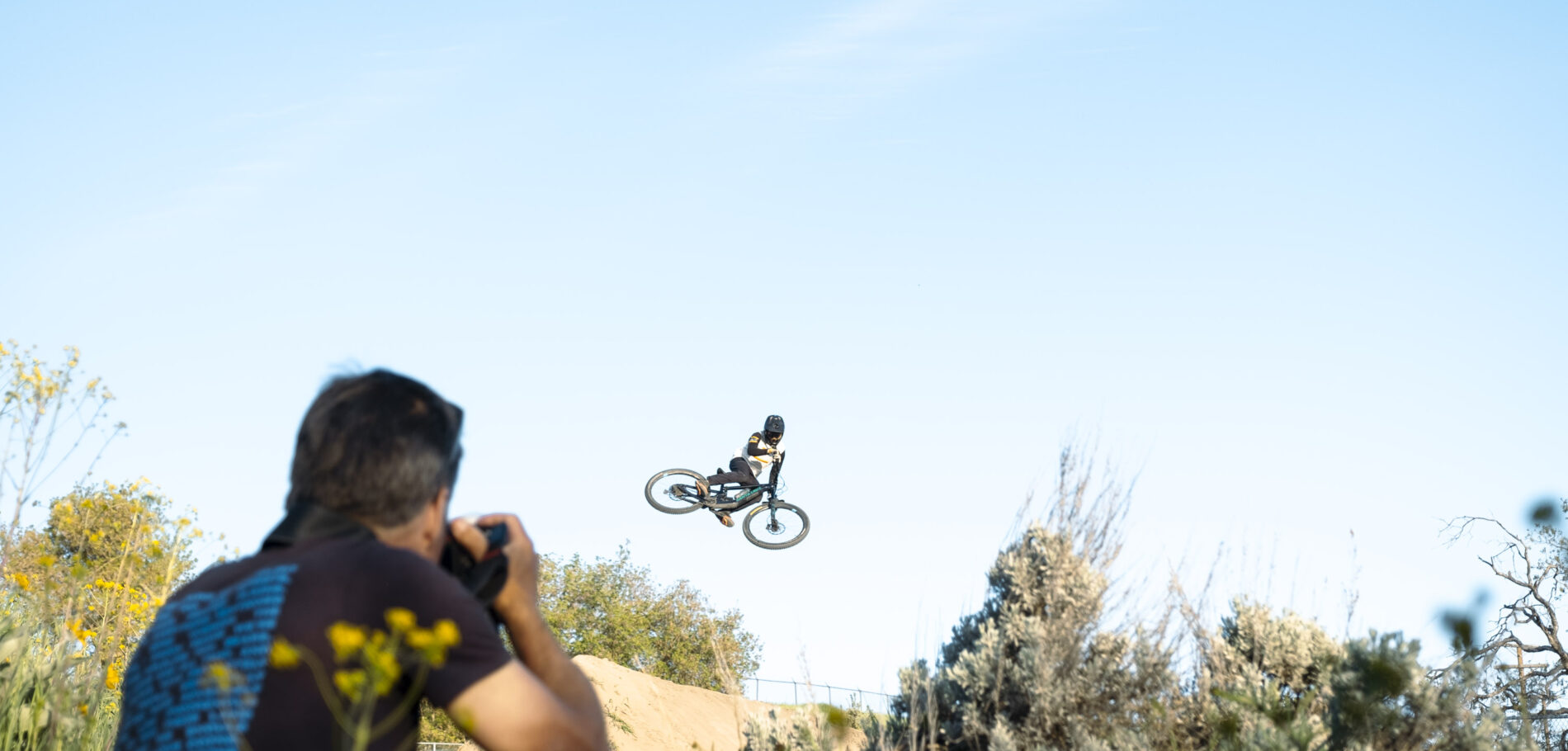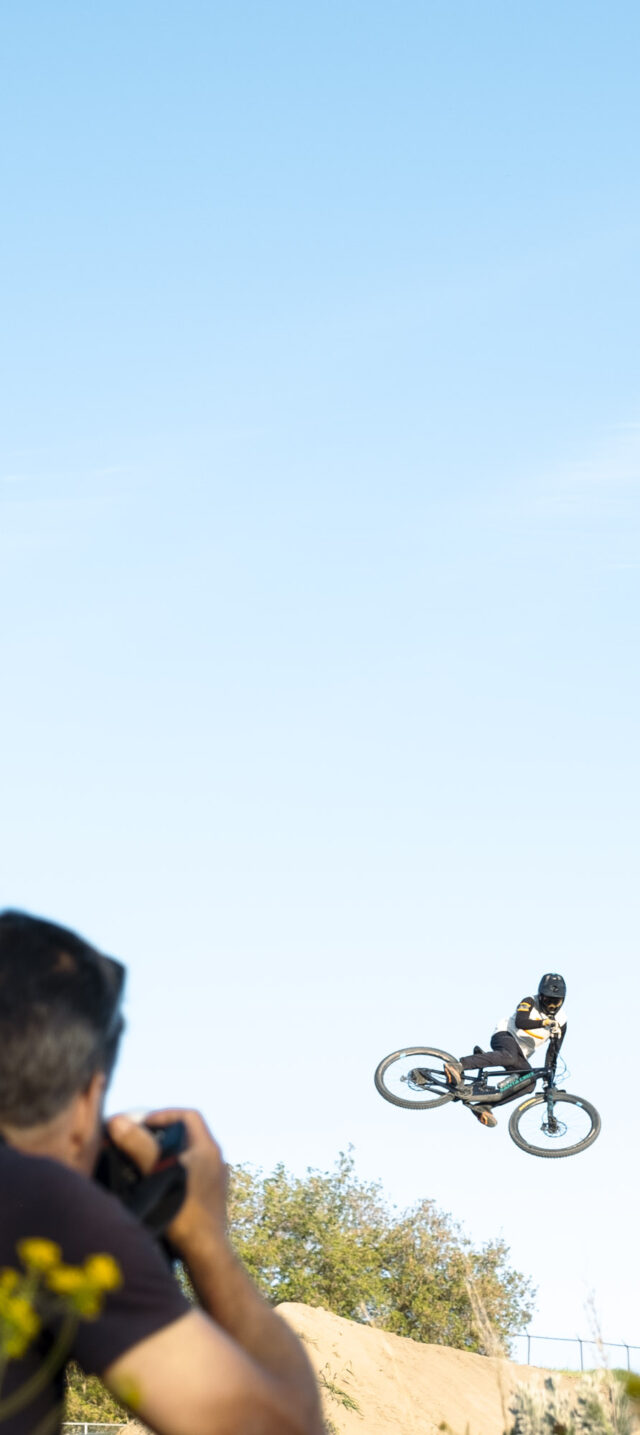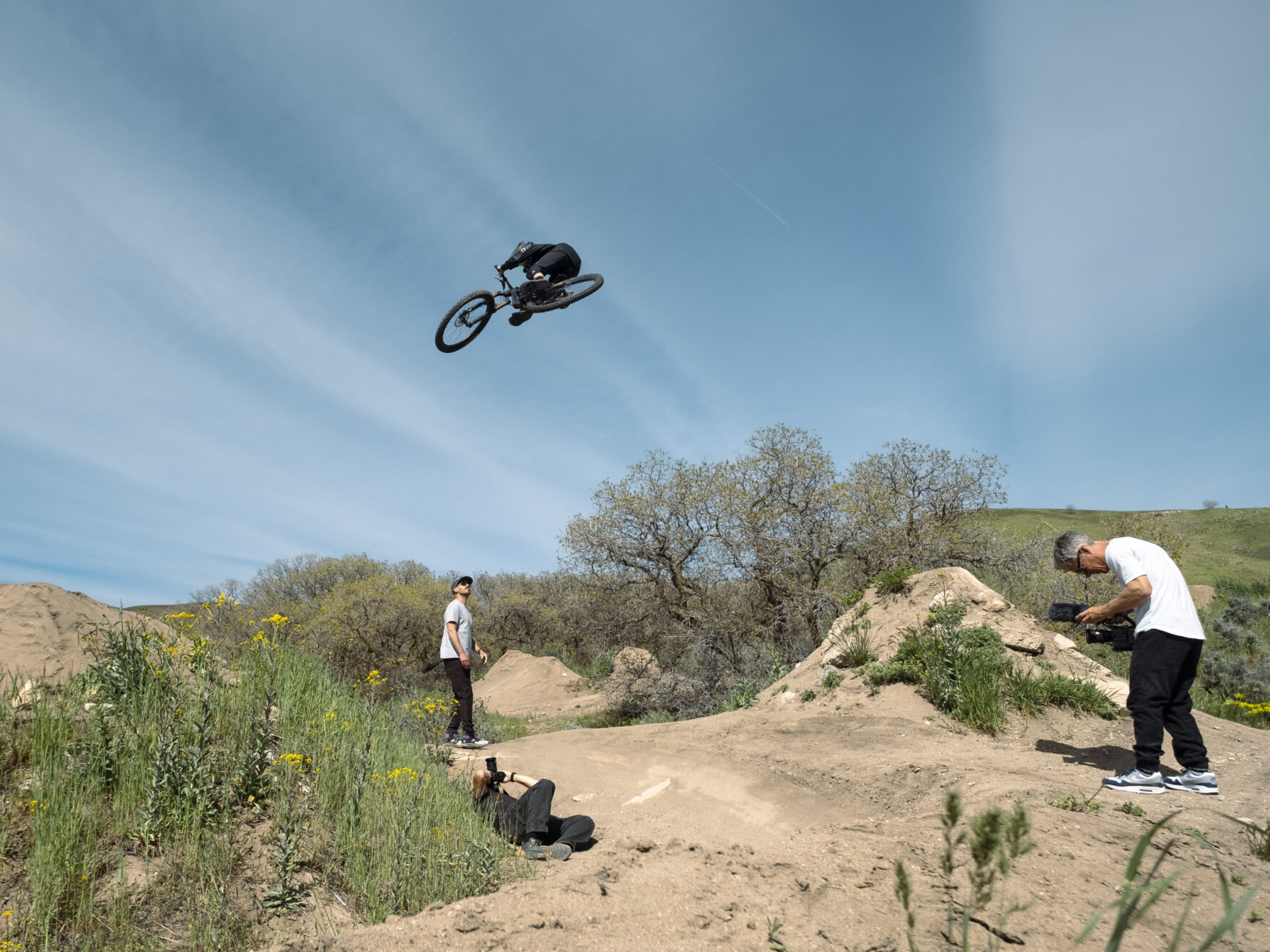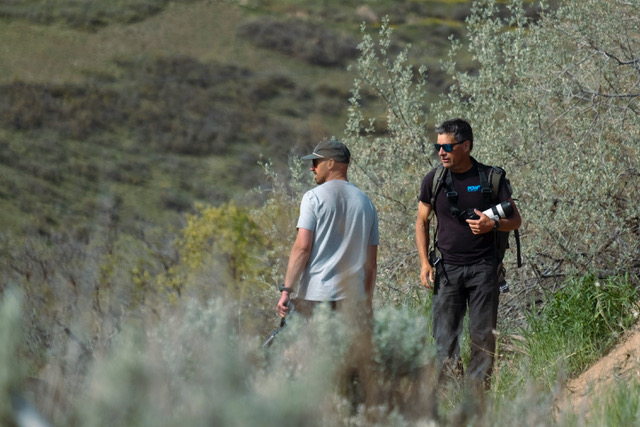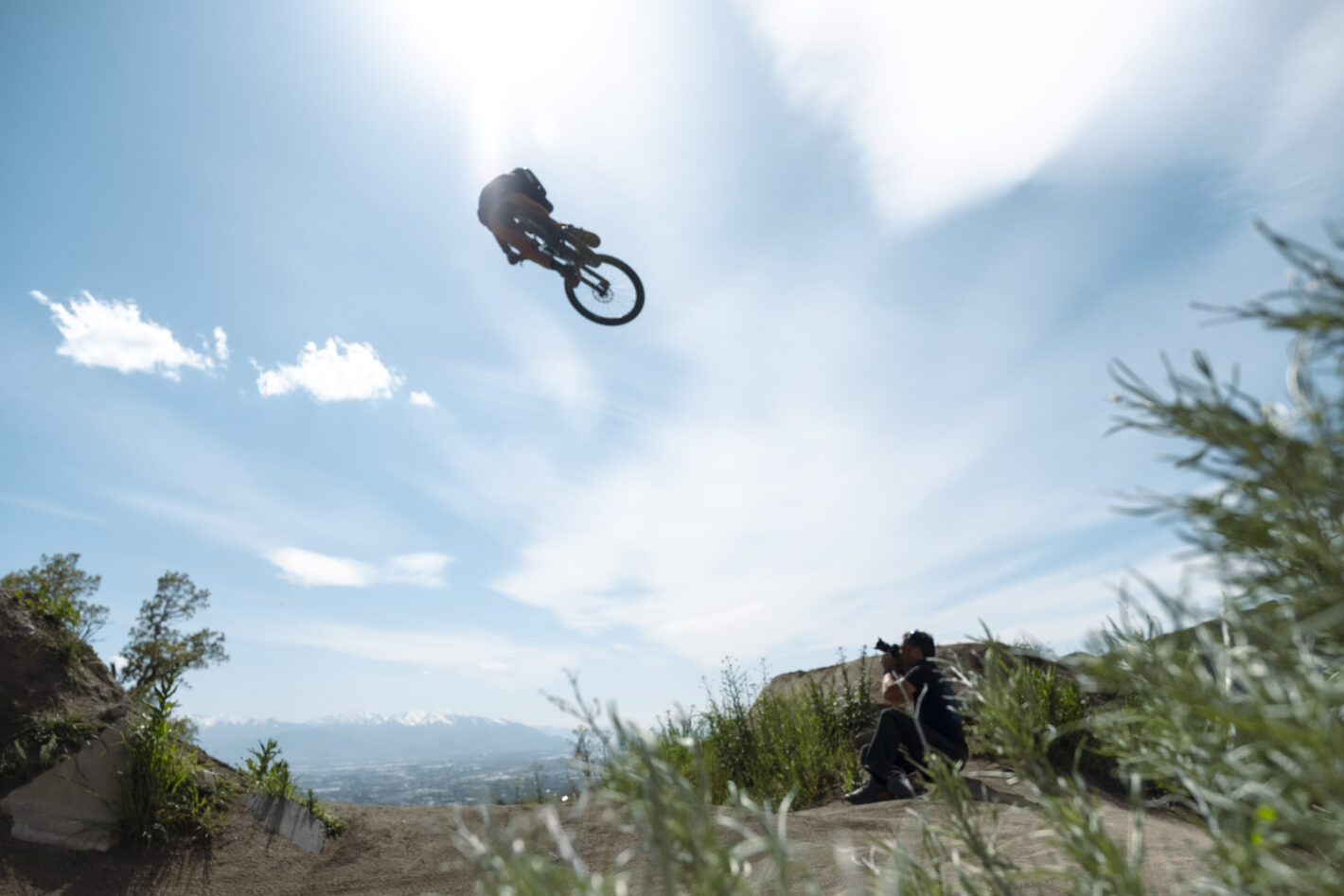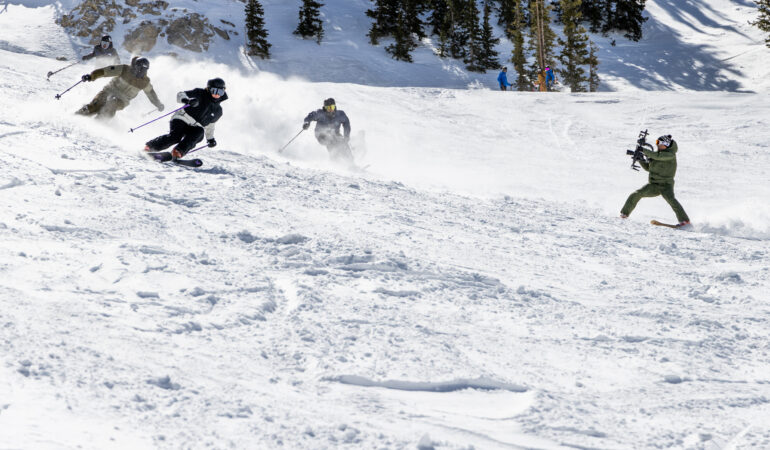Travis Tomczak built his marketing career by aligning brand positioning with products and customers—and tracking growth and loyalty because of it. He did that at times by being irreverent. But irreverence only works when a company knows who it is. Just as with athletes, authenticity matters. The Gap can’t be irreverent because they sell milk to milk drinkers. But outdoor sports were born from counterculture dirtbags, and despite the posing and entitlement we see in our feeds, that still matters. Much of Travis’s irreverent marketing rode on the images Scott captured.
Travis used to hire Scott for shoots. Later they would hang at enduro races where Travis competed in the age groups and Scott’s son Julien, a future World Cup downhiller, gunned it for the pro podium. This was just before Covid, and Scott and Travis were looking for the next phase of their careers. Scott’s meniscus kept saying he couldn’t chase young athletes with a 40-pound camera pack on his back forever. Travis was uninspired by the prospect of working for corporations run by people who would nod in agreement in support of brand authenticity—and then chase lowest common denominator ROI.
The origin story of the marketing company Travis and Scott started, The Community Project (TCP), is convoluted, as most origin stories are, but after years of kicking around ideas they looked at each other and said something to the effect of: “Between the two of us, we understand marketing from the brand and creative side as well as anyone. We should start a full-service agency.”
The Community Project went live in November of 2023. It’s a case study in how the business of creativity and marketing works now, as the categories evolve in real time under a cloud of uncertainty. That’s not hyperbole. To quote Donald Rumsfeld, the creative community is facing many “known unknowns” and “unknown unknowns” at the moment. Will AI break SEO? If influencers aren’t selling outdoor products, what exactly is the point? How can marketers reclaim a brand’s image after years of just moving SKUs through micro targeting? How does one even go about turning a customer base into an audience that breathes your brand?
What Scott and Travis learned in the lead-up to their launch, and what they’re learning now, isn’t just meaningful to their business, it’s meaningful to the creative industry as a whole at this moment in time.
